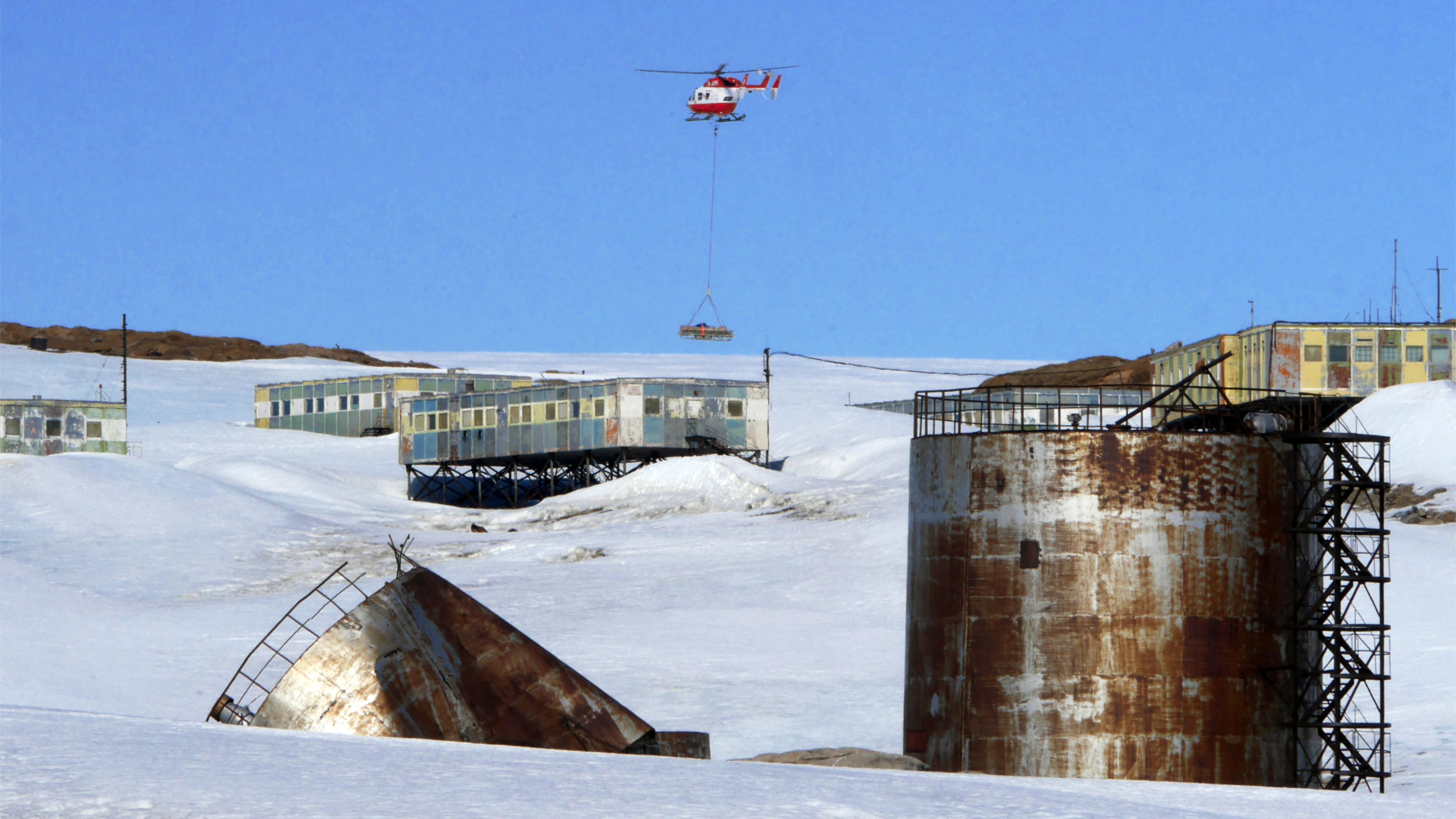
On an empty Soviet Antarctic base
This is part of a series of letters I sent home during my first research expedition, on the German icebreaker Polarstern.
You can start at the beginning here.
The last time we were near Molodezhnaya Station, dropping off our land geologists, I thought it was the highlight of the expedition. I hadn’t counted on the return visit when we would come back to pick up the land team: another day with even better scenery and even more exciting action.
Given the last time we were here, I decided to set an early alarm, despite it meaning only four hours’ sleep. When the alarm went off, I groggily got up and considered getting straight back into my bunk, but had a quick look past the blackout blind and saw a promontory of actual rock a mile or so from the ship — the first solid land we’d seen for almost two months (other than very distant mountain peaks through binoculars). That sealed it, and I got dressed. I went out on deck and bumped into the chief scientists talking together. They said something like “and Tom”, so I stopped and listened and they asked if I would be happy to join two others on an excursion in the zodiac to collect some rock samples from the rocky shoreline that I’d just seen. I couldn’t believe it, and just said “me? wow!” which they took to mean yes. I was told to meet in the helicopter hangar in half an hour to get an immersion suit.
Those of us going managed to find our way to the hangar while avoiding the helideck where operations were underway. The immersion suits are bright orange insulated drysuits with seals around the neck and wrists and integrated waterproof socks. They’re designed to keep you alive for an hour or two if you’re unlucky enough to end up in the -2°C seawater, and since they’re primarily for use in the helicopter (rather than in an emergency), they were actually quite comfortable. Once we’d donned our immersion suits, we headed down to the working deck to pick up lifejackets and wait for the zodiac to be lifted from its cradle on the top of A-deck down to the water. The zodiacs (Polarstern has two) are RIBs: aluminium-hulled tenders with inflatable sides and bows and a 70 hp outboard motor. They’re also bright orange. They both have “POLARSTERN” in big blue letters on the sides, but they also have their own names: the one we were using was called Louisa.
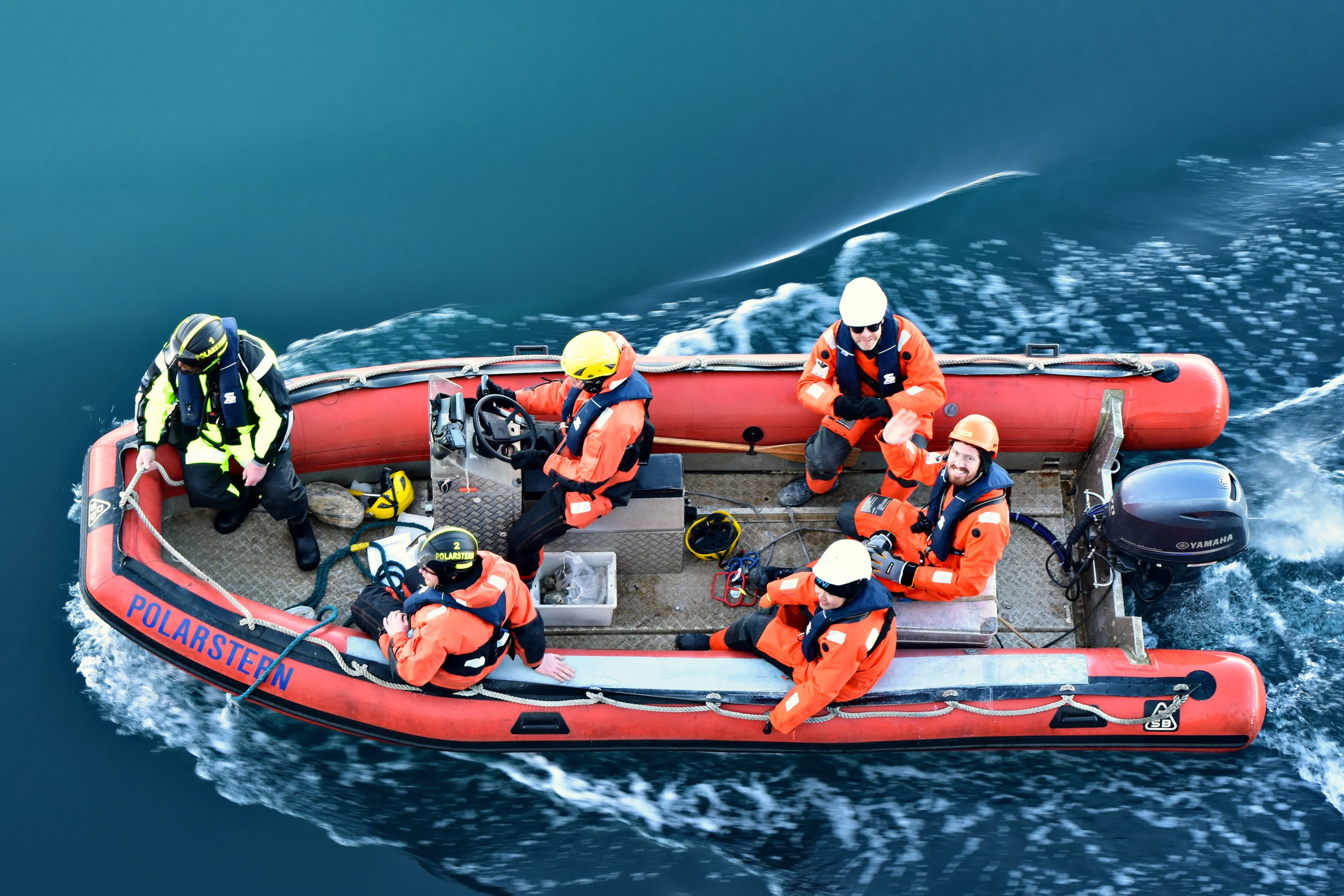
Once it was level with the working deck, the first officer got in and the boat was lowered the rest of the way. The rest of us, including two members of the crew, boarded by a rope ladder over the side. The working deck is much higher than it looks from on deck, or at least it seems it both when climbing down a rope ladder and when in a tiny boat alongside. In fact, the whole ship looks massive from this new perspective. And a new perspective was very welcome after so long confined to the same place.
We sped off towards land, leaving Polarstern behind us. The day was very sunny but cold, and the wind as we raced along stung our faces, but we were all smiling huge smiles. I couldn’t believe we were doing this, or that three years ago I was sat doing an office job in London thinking of changing career. I had no idea it would get me here.
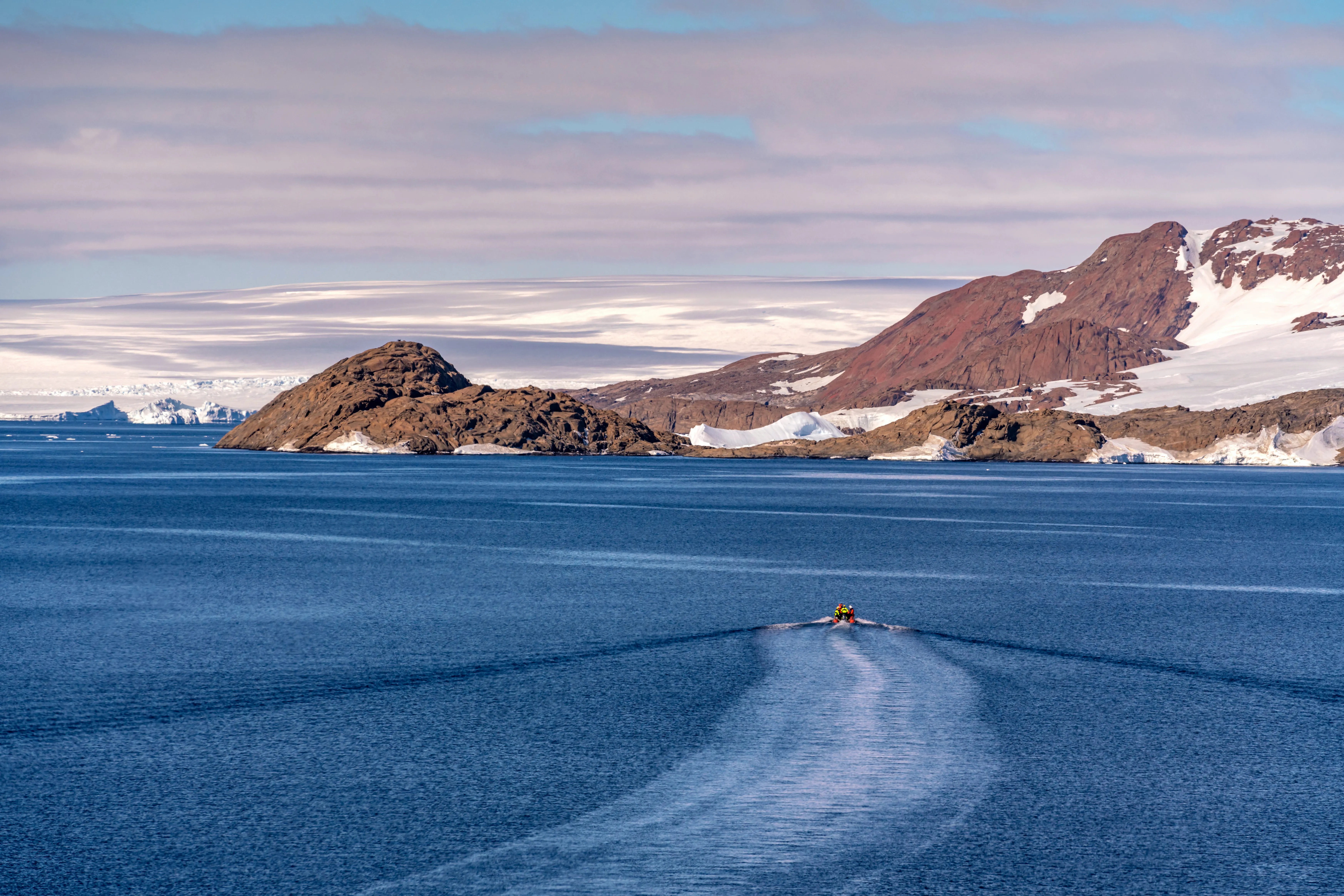
The first area we went to had appeared promising from the ship but proved to be too dangerous to try and land. The zodiac has an echosounder, and the depth reading was getting shallower and shallower but we were still a way away. We abandoned that attempt and continued along the coastline. The brownish-red rocks came right down to the water (no vegetation of course), but they were often separated from the open water by a margin of fast ice which was too high (and too slippery) to try and land on. By pushing through a patch of water littered with chunks of ice (the resulting bumps and scrapes slightly worrying in an inflatable boat, though it is apparently ice-strengthened), we found another spot and got close enough for the crew member in the bows to awkwardly hammer off a piece of rock. Unfortunately, it was again too dangerous to try and get out, and this spot also had foot-long icicles on the overhanging ice on either side of it, looking very threatening with their points aimed at our inflatable sides and the swell pushing us up into them every now and then.
We went on like this, finding a small area of exposed rock at the water’s edge but abandoning our approach just as we thought we might be able to make it, for about half an hour. I was starting to think we wouldn’t get ashore after all but that it was still an amazing experience when we rounded another corner and found ourselves face to face with the Russian Antarctic station itself, with an almost flat area of land and a slightly less precipitous ice margin. The helmsman decided to go for this one and pushed the bows against the ice. The man at the bow scrambled out with the painter and we all looked at each other, thinking “well, if he can…”. Thinking it’s now or never, I didn’t wait to be told to move. The ice was slippery, and the boat was crunching up and down the edge of it with the swell, but all three of us managed to get out safely.
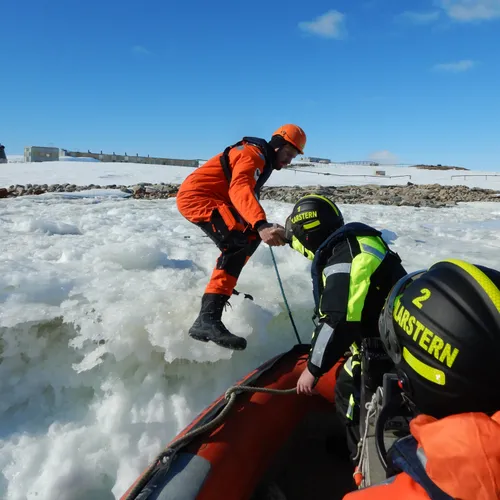
We found ourselves in a strange place — we’d effectively landed on the Russian base’s front doorstep: surrounded by their buildings and on a kind of beach (in the geological sense anyway; you wouldn’t break out the sun loungers and go for a dip). The station is of 1960s soviet vintage when it was used as “a launch site for sub-orbital meteorological sounding rockets” according to our onboard offline version of Wikipedia (a lifeline). How much of that sentence is euphemism I don’t know, but the base certainly felt very 1960s and very Soviet. It would be fascinating enough if it weren’t also in East Antarctica. The contrast between old decrepit oil tanks and empty pastel green buildings streaked with rust on the one hand and clear blue water, pristine ice, and a smattering of adélie penguins on the other was surreal. The Russians clearly don’t have the strict rules the Germans (and British) have to follow, because dotted around the landscape were old abandoned pieces of machinery and even some rubbish. One of the big silos or oil tanks had been crushed and lay crumpled and torn on its side, there was the rusting body of some kind of vehicle, and as we walked around I spotted an old boot, a sausage skin, some broken glass, some electrical flex, and various other smaller bits clearly of human origin. The area wasn’t a dump, but if you looked closely it certainly wasn’t what the Antarctic Treaty System envisaged for the White Continent.
Still, we’d had to land here and it was the only place for thousands of miles around that was at all touched by humanity, and I could clearly see what it would have been like before the station was there. We’d gone past lots of it in our attempt to find a landing place, after all. The geology, for those of you who were wondering, was very old — hundreds of millions of years old: gneisses with granite intrusions like you might see in Scotland, with particularly large crystals of quartz, feldspars, and micas in the granites. The “beach” was made of weathered gravel and sand scattered over the bedrock: it is exactly this sort of material that gets into icebergs, floats out to sea, and falls to the seafloor as the iceberg melts. We then come along and dig it out of the ground millions of years later and it can tell us all sorts of information like where the ice sheets were, where they were flowing to, how icebergs moved, and so on. By collecting some of it while it was still on land, we could link the material in our cores to particular locations inland. And it also meant some of us simply had to go on an expedition to land on Antarctica.
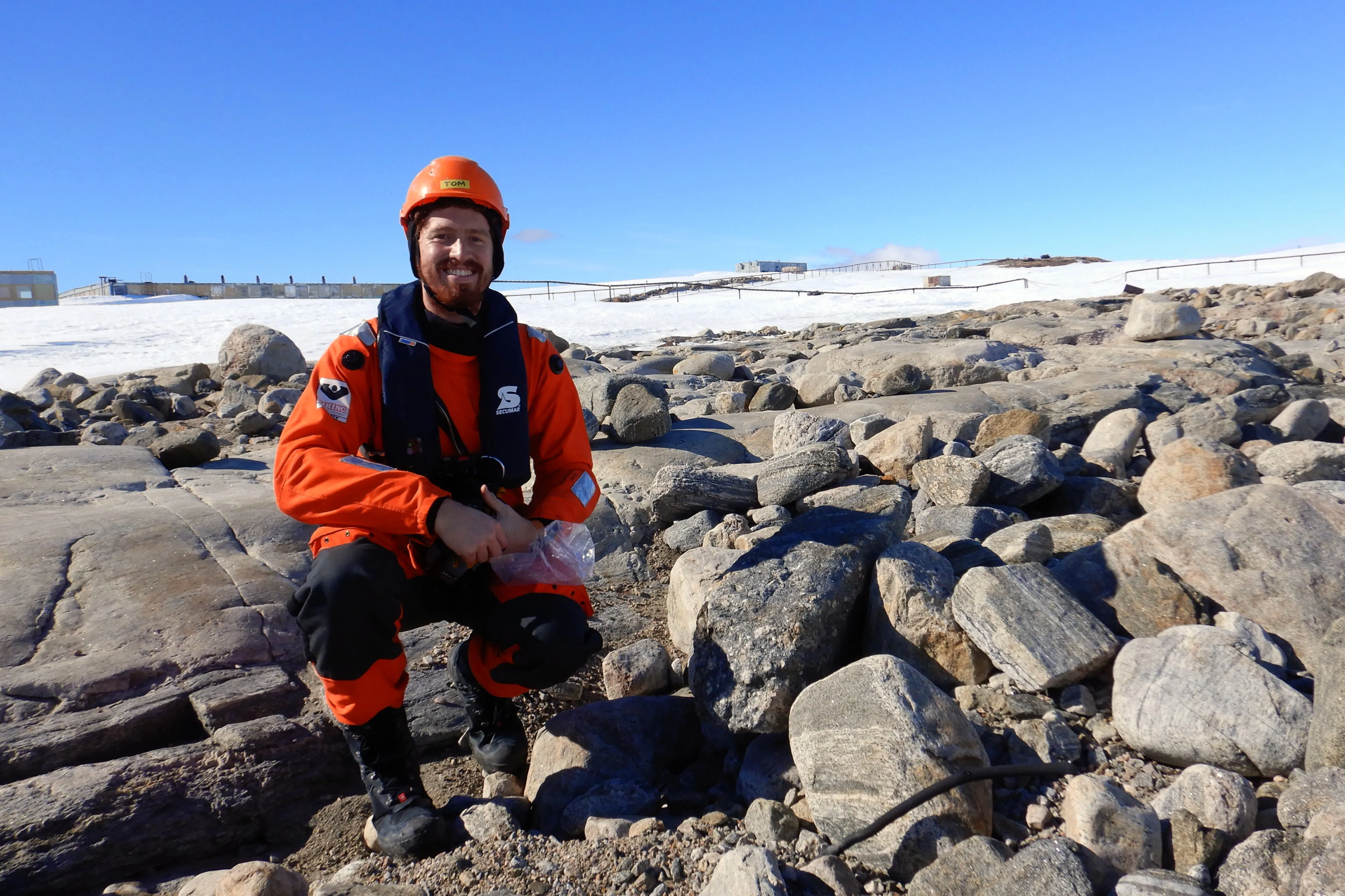
Meanwhile, back on Polarstern, the Captain was getting increasingly worried about us. In our search for a place to land we’d rounded a corner which had hidden us from view. The crew’s radios had also lost connection, so we had effectively disappeared. Although the likelihood was that we were fine, the Captain decided to initiate a rescue mission, starting with asking the helicopter to fly over our last known position to check on us. When it did, with the mechanic hanging out of the door on a harness, we waved merrily at him and carried on unaware.
After we’d taken lots of samples and even more photos of ourselves, we got back in the zodiac and headed towards the mothership. Polarstern is not a big ship compared to container ships and cruise liners, but as we approached in our tiny zodiac, she looked big enough. She still had some snow on her bow from having broken through the ice to get to Molodezhnaya that morning, but otherwise was completely unharmed by all the heavy icebreaking she’d done in the last few weeks — not a scratch on her. We came alongside, climbed back up the rope ladder, and back to the familiar surroundings of the working deck.
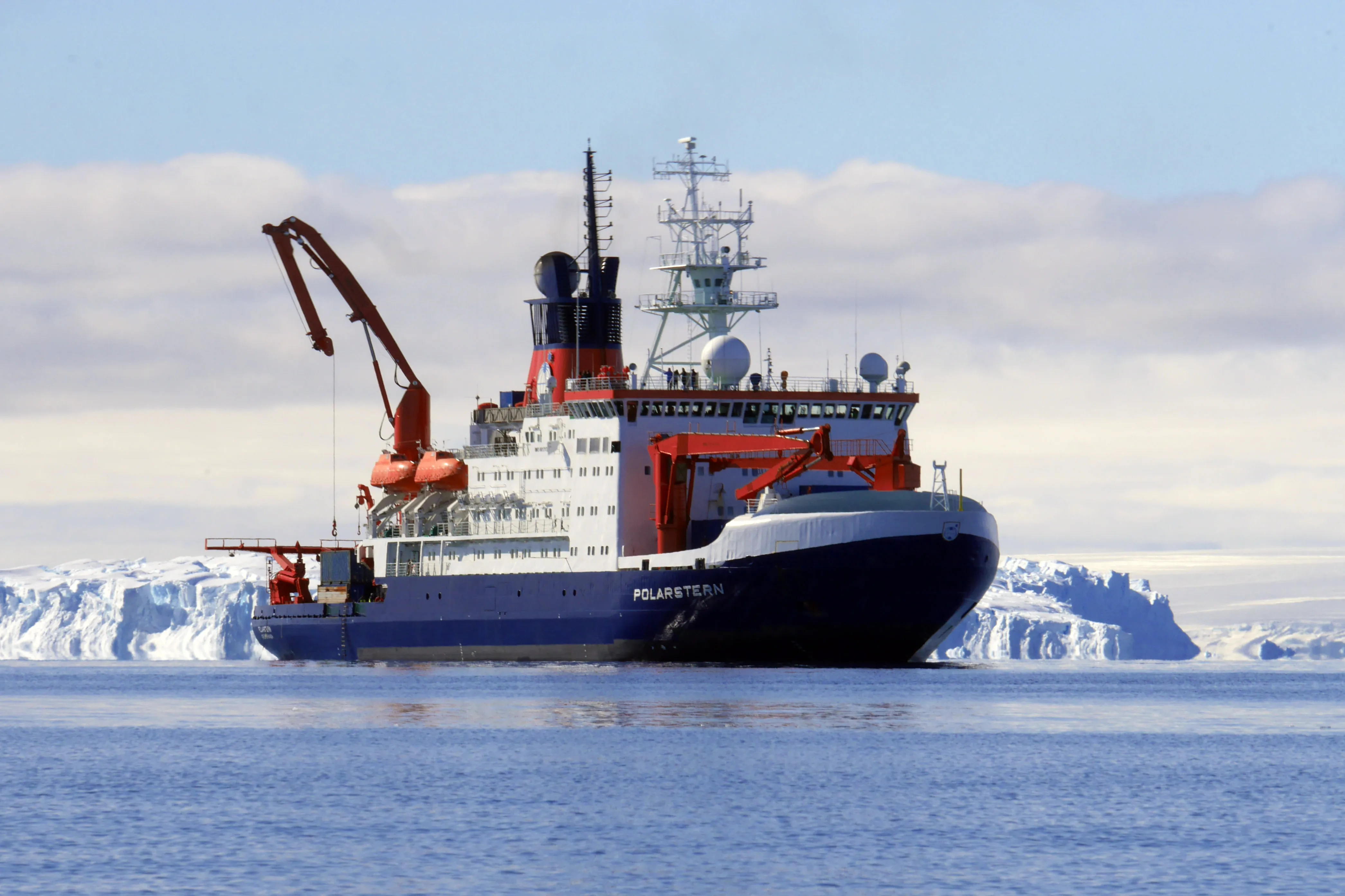
It took a while for it to sink in, and unfortunately, the politics of who gets to go up in the helicopter or who goes in the zodiacs meant there was quite a bit of jealousy on our return. I felt guilty for having had the privilege to go ashore, when there are many others who deserve the honour at least as much as I do, if not more — including my cabin mate and colleague Matt who had been asleep all through this because he hadn’t set as early an alarm as I had and had been working through the night. Some senior people told me not to worry and that I had absolutely earned it through all the hard work on deck, particularly my efficiency with the physically demanding job of cutting the core liners, and the wet and cold job of washing everything down. Still, it took a bit of the shine off.
Despite our momentary disappearance and the resultant rescue efforts, another zodiac was allowed to leave for a different area. Their radio didn’t work either, and they were summoned home after an hour by some very loud blasts from the ship’s whistle, which I was unfortunately standing very near. They’d gone the other direction and had therefore seen a much more natural landscape, but I think our experience was more interesting, given the human and historical context. Either way, I can now definitely say I’ve been to Antarctica.
We left the area soon after the second zodiac returned and all cargo flights for the land team were over. We’re now on our way back east, having changed our plan to avoid another storm. This way we’ll return to an area where we hadn’t been able to core due to more bad weather, then we’ll turn north and set out on our transit home to Cape Town.